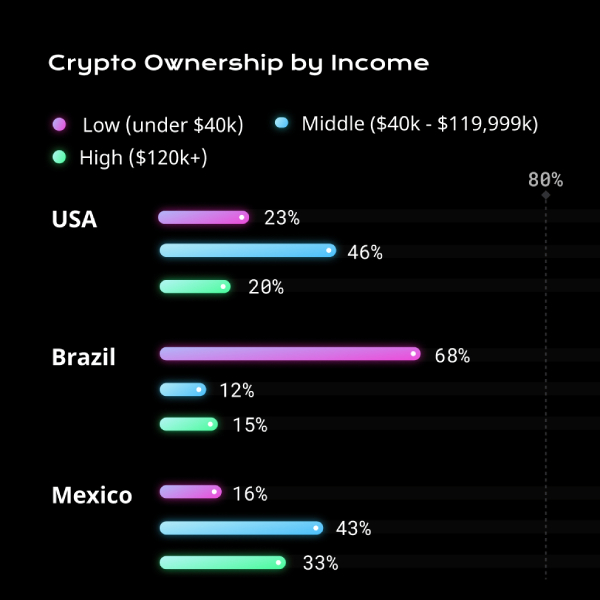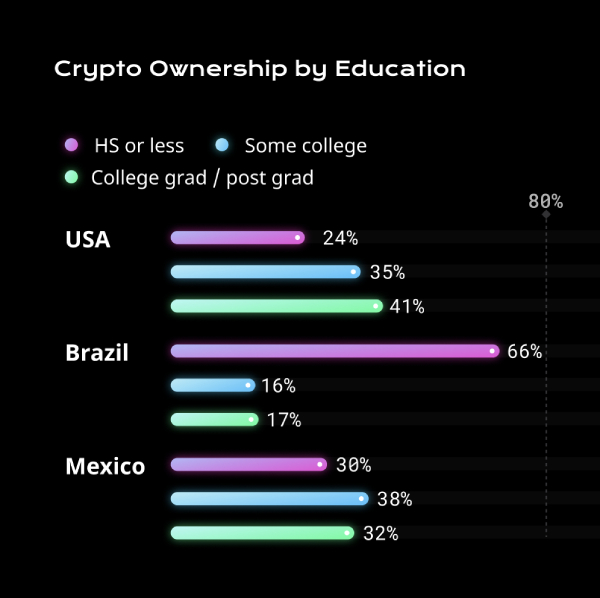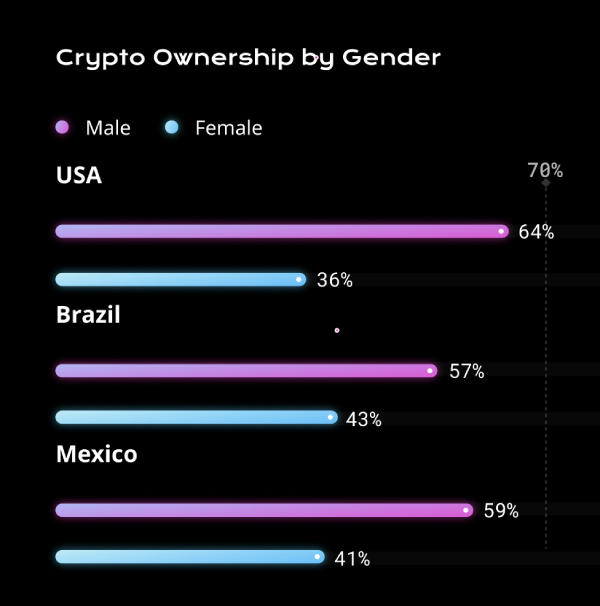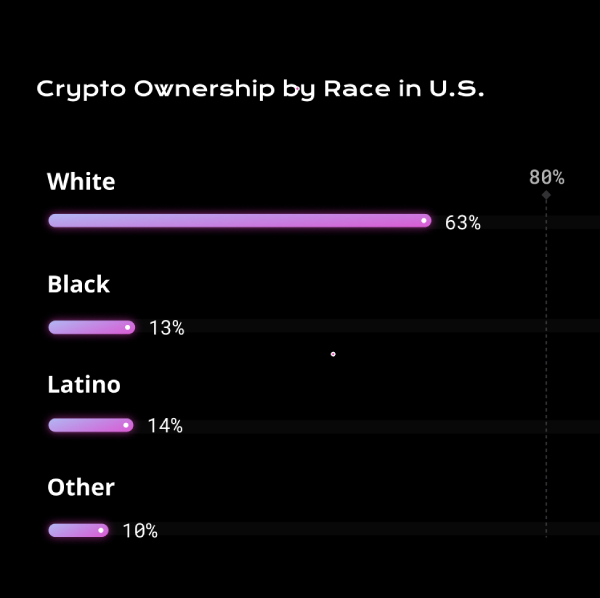Crypto ownership: A breakdown
Data gleaned from the recent Global Crypto Literacy Survey provided some interesting details about how the world understands cryptocurrencies. It also showed some interesting trends about who owns cryptocurrencies.
Here are some high level trends worth noting:
Crypto ownership by age
As mentioned in a previous post, Baby Boomers are getting left behind, crypto ownership skews young. This makes sense given that historically adoption of new technology happens via younger generations and then grows from there.
It also makes sense because likely older people have already developed financial habits, whereas younger people are just getting started with investing and saving, and so they might be more flexible in adopting new kinds of financial tools and products.
In Brazil and Mexico, the leading age demographic for crypto ownership is 18 to 24 year-olds (representing 22% and 18% of all crypto ownership in those respective countries). In the U.S., crypto ownership skews slightly older, with 25-40 year-olds representing 25% of ownership.


Crypto ownership by income
Crypto ownership, like other kinds of investment activities, skews depending on income bracket.
In the U.S. crypto ownership is pretty well dispersed throughout income brackets, with the middle income bracket owning the most crypto. In Brazil, members of the low income bracket exceed other income brackets, and in Mexico, the middle income bracket still dominates ownership, but members of the high income bracket also reported substantial crypto ownership.
Crypto ownership by education
Crypto ownership by education tracks very closely to crypto ownership by income level, with the same trends, based on geography emerging. In Brazil, people responding with the equivalent of a high school education or less reported the most ownership. In the U.S. and Mexico, ownership is pretty evenly distributed among all education levels.


Crypto ownership by gender
Universally, across geographies, more men than women own crypto at about an average ratio of 60:40. The closest ownership parity based on gender alone is in Brazil, where 57 percent of respondents owning crypto identified as male, and 43 percent identified as female.
Crypto ownership in the U.S. by race
In terms of crypto ownership by race in the United States, 63 percent of respondents owning crypto identified as white. Other responses included 13 percent Black, 14 percent Latino, and 10 percent other.
One of the primary use cases for cryptocurrencies is to build a new financial system that is based on computer code and free from the bias of the traditional financial systems. So, making sure universal and equitable crypto access and adoption is critical to ensure long-term inclusivity.
Learn more about this and other topics by taking courses in the bitcoin, NFT, DeFi, and security sections of the site. And be sure to take the crypto literacy quiz.

